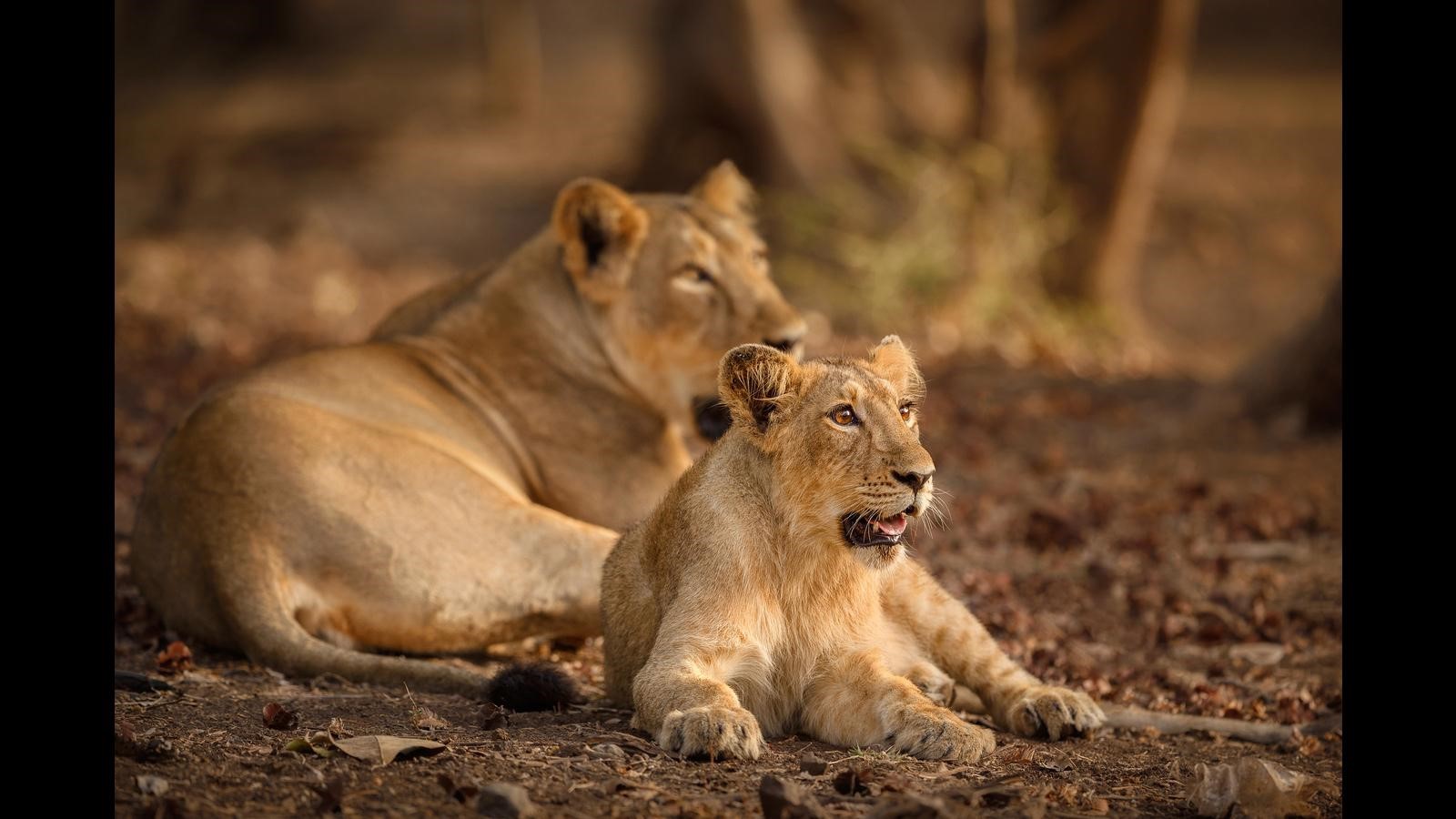Gujarat’s Lion Census Shows Record Population Growth
Gujarat’s Lion Census Shows Record Population Growth
Why in the News ?
Gujarat’s 2024 lion census revealed a 32.2% rise in the Asiatic lion population over five years, reaching 891 lions in the Gir Forest and surrounding areas. This growth prompts praise for conservation efforts in the Gujarat wildlife sanctuary and raises concerns over habitat limits and the need for more protected areas to ensure the long-term survival of this iconic species, considering climate change impacts on biodiversity.
Key Findings from the 2024 Gujarat Lion Census:
- Total population: 891 lions, up from 674 in 2020, highlighting successful wildlife conservation efforts in the Indian lion habitat.
- Protected areas: 384 lions in forests and sanctuaries, including the Gir Forest National Park.
- Non-protected areas: 507 lions in revenue land and coastal corridors, indicating the need for expanded conservation areas and improved forest management to protect ecosystem services.
- Range expanded by 60% since 2015, demonstrating the success of lion conservation initiatives.
- Highest lion population in Amreli district: 257 lions, showcasing the importance of this region for Asiatic lion conservation.
- The census covered 35,000 sq km across 58 talukas in 11 districts, providing a comprehensive view of the lion population in Gujarat.
- Method: Direct beat verification over three days, unlike the tiger census, ensuring accurate wildlife population monitoring.
Conservation Efforts and Government Initiatives
- Success attributed to ₹2,927 crore Project Lion launched in 2020, a major step in wildlife conservation and biodiversity protection in India.
- Focus on habitat restoration, prey-base enhancement, and human-wildlife conflict mitigation, addressing key aspects of ecosystem functioning and urban biodiversity concerns.
- Lions have established satellite populations in seven regions including Mitiyala, Girnar, and Bhavnagar coast, expanding their range beyond the core Gir Forest area.
- The core population still lies in Gir National Park and surrounding sanctuaries, which remain crucial for Asiatic lion vs African lion conservation efforts and maintaining ecosystem services.
Challenges and Expert Concerns
- Protected areas are over capacity, pushing lions to unprotected zones, highlighting the need for expanded wildlife sanctuaries and addressing habitat loss due to climate change impacts.
- Conservationists urge expansion of sanctuaries and reserved forests to accommodate the growing lion population and maintain ecosystem services.
- Experts like YV Jhala stress that lions must remain wild, feeding on natural prey rather than livestock, to maintain the ecological balance and support urban greenery initiatives.
- Ensuring long-term ecological balance is vital to sustaining this growth and protecting the biodiversity in India’s unique lion habitats, which contribute to overall environmental ecology and ecosystem services.
- The increasing lion population also presents opportunities for Gujarat tourism, with proper management to balance conservation and visitor experiences while considering climate change impacts on biodiversity and ecosystems.
- The census did not specifically count lion cubs, but their presence indicates a healthy breeding population, crucial for long-term ecosystem services and biodiversity conservation in the face of climate change and habitat loss.




